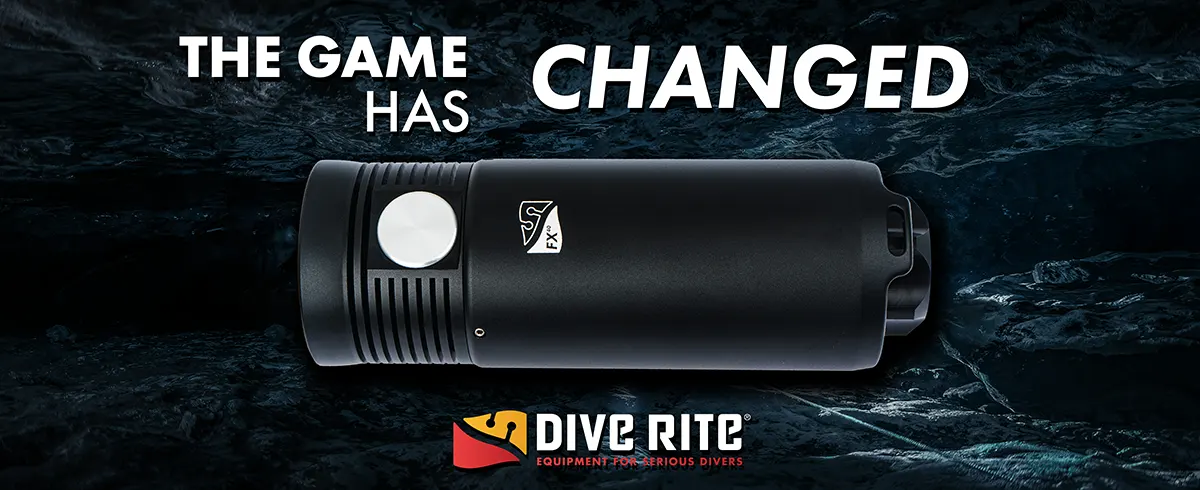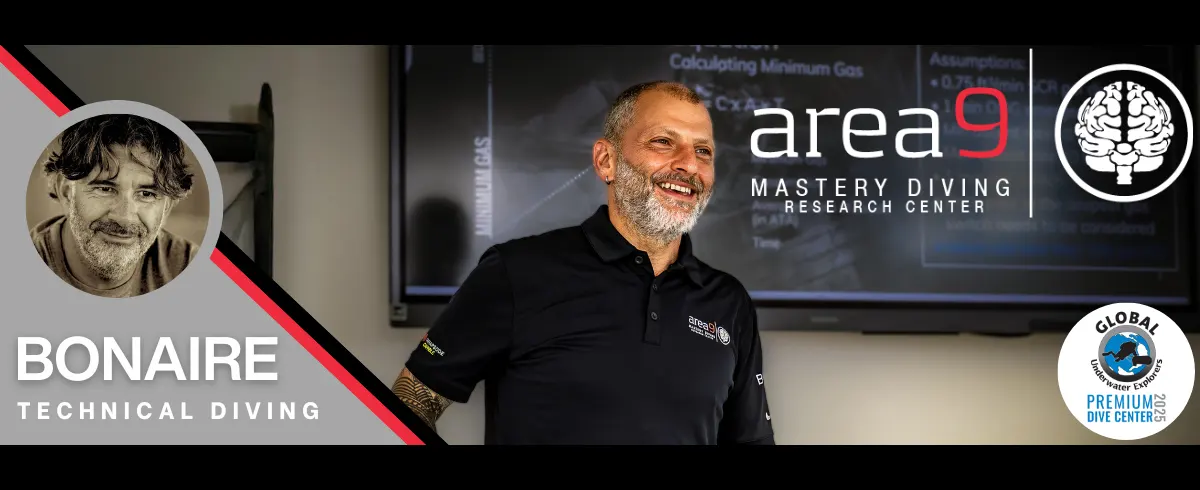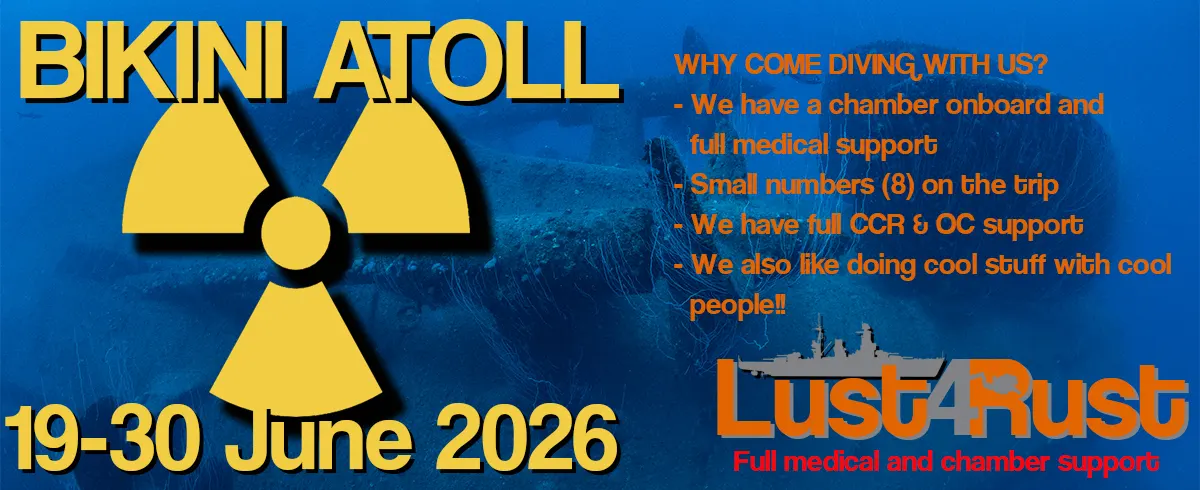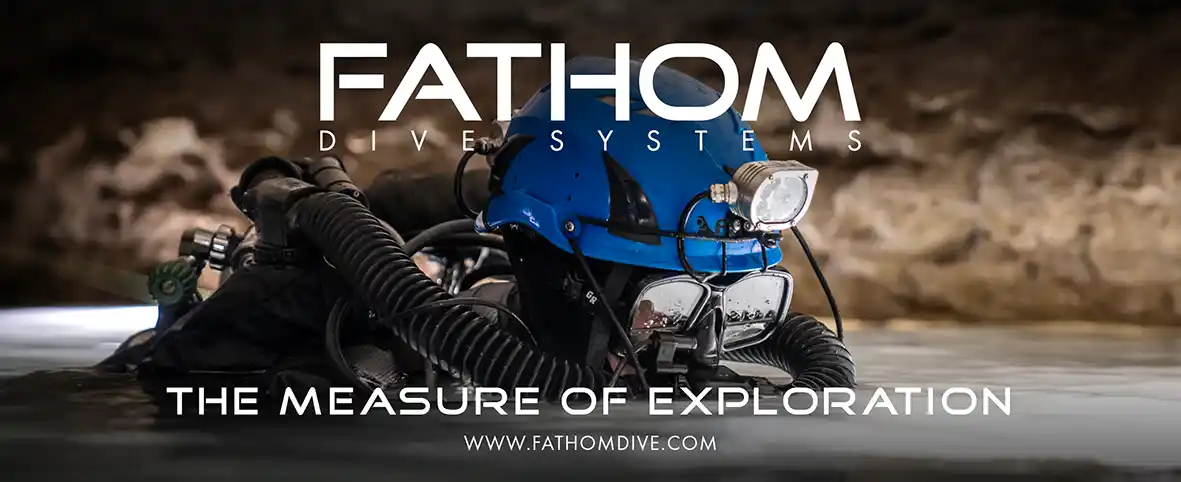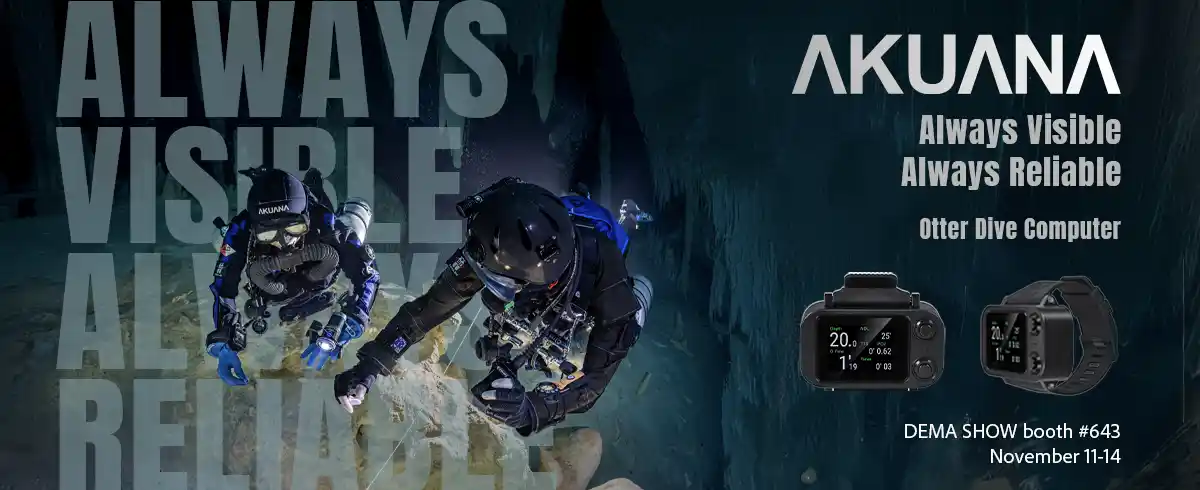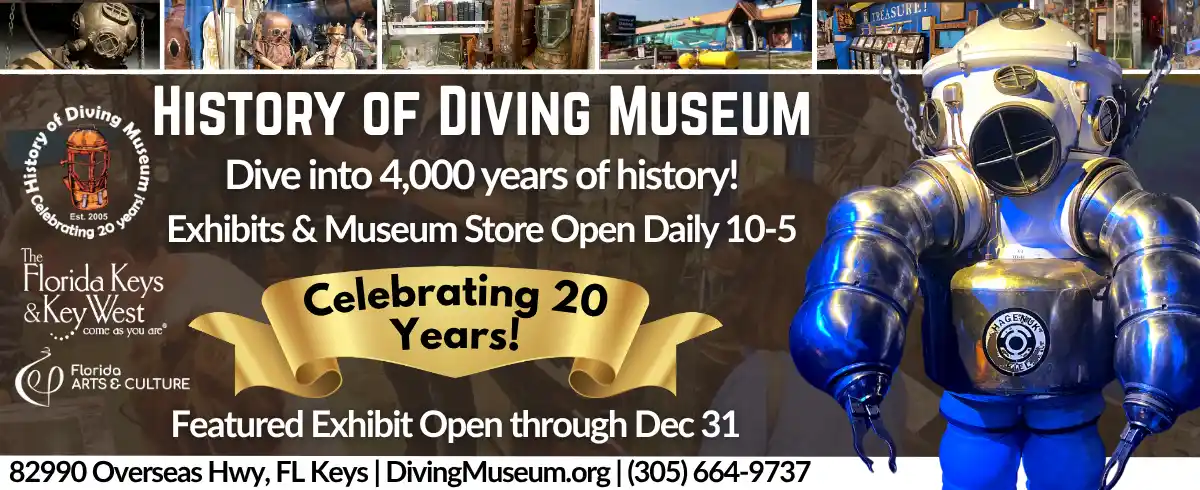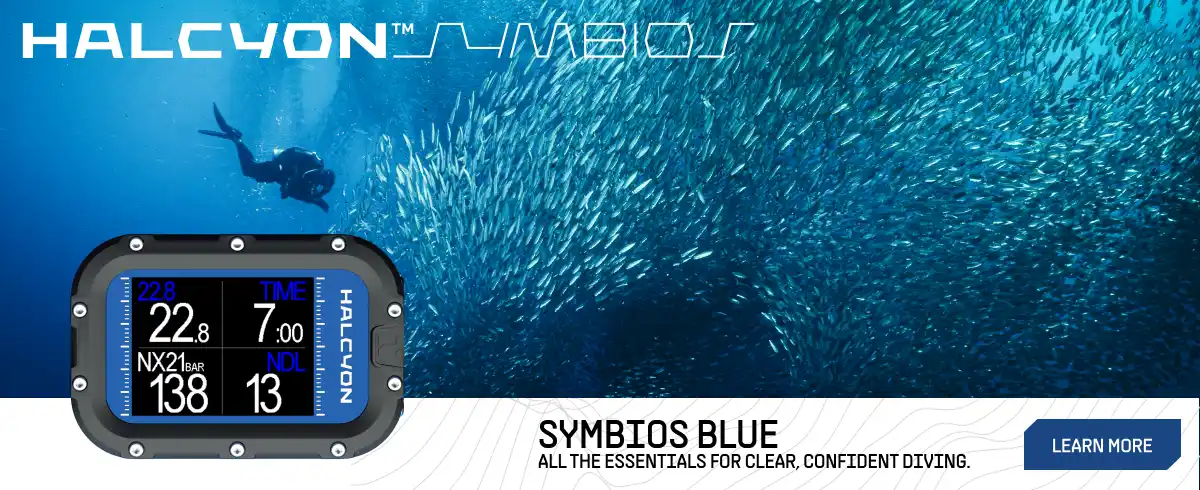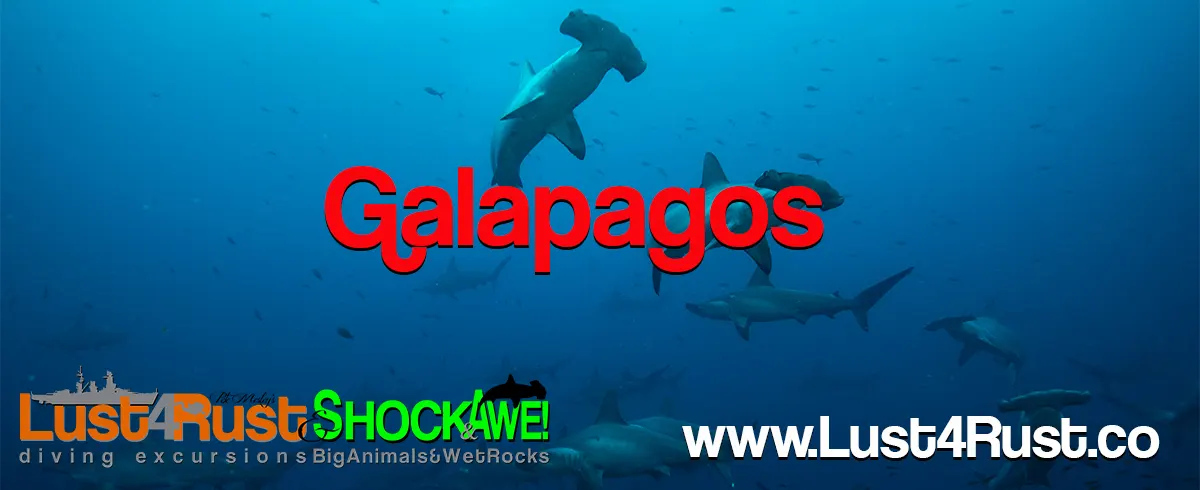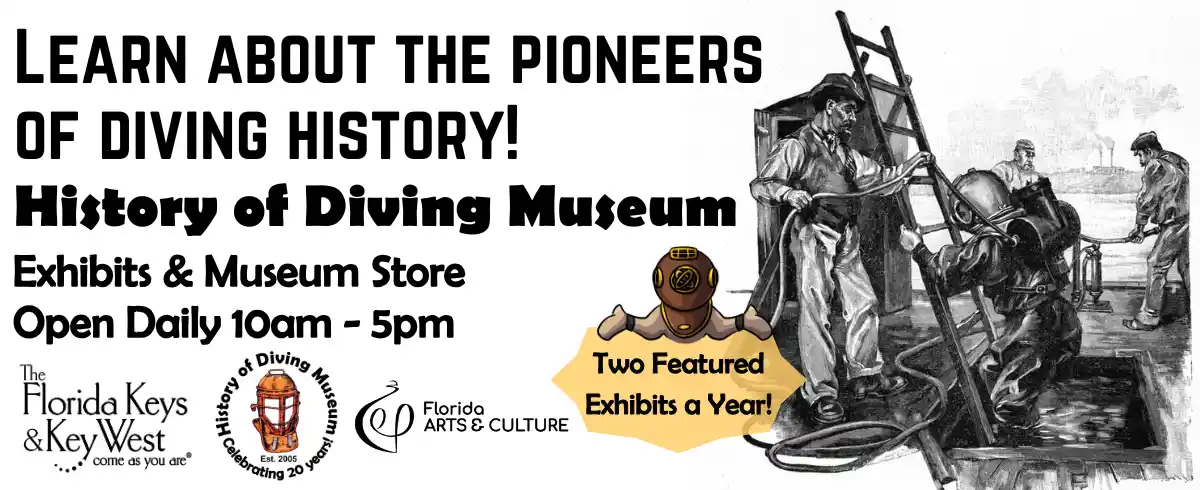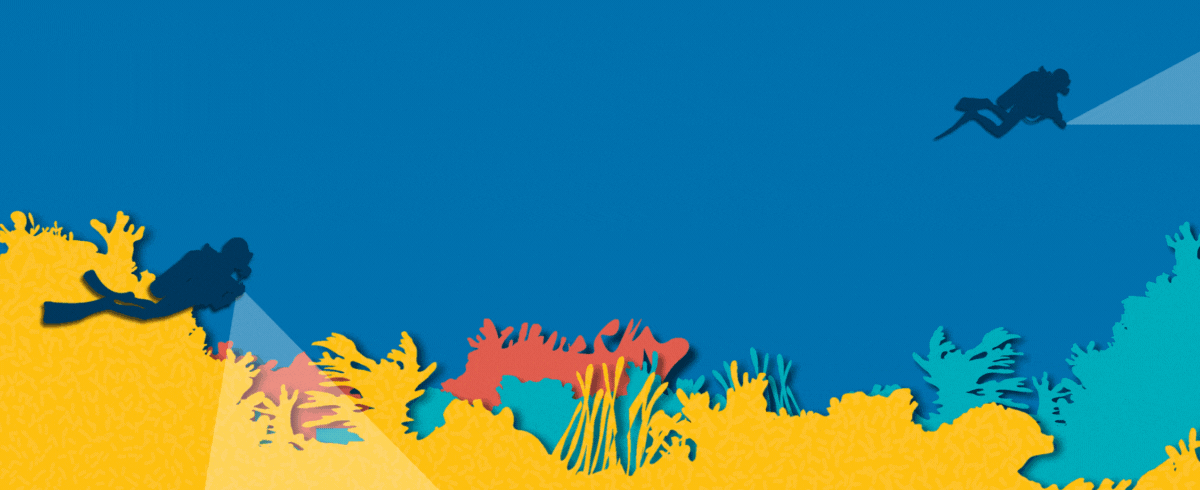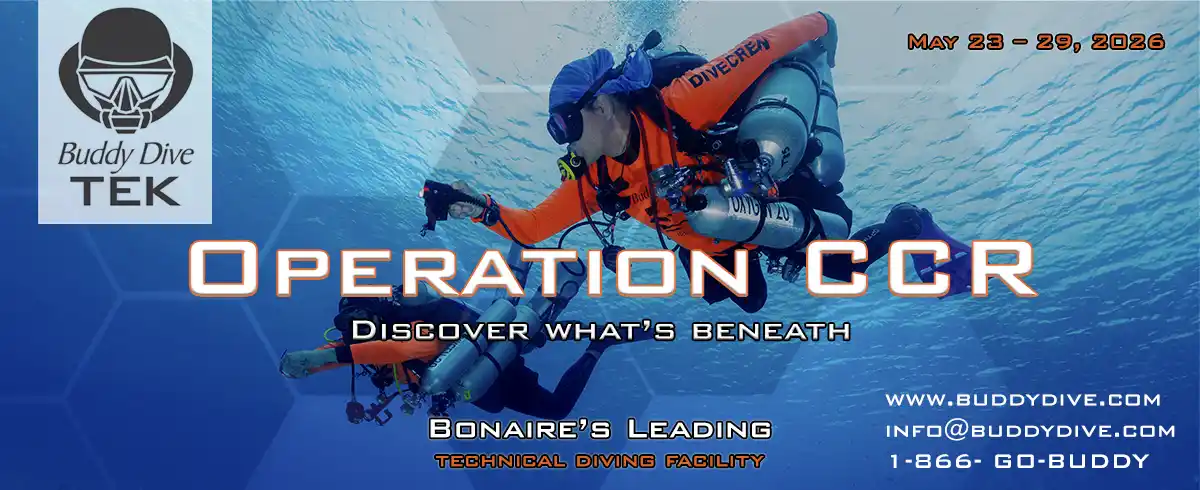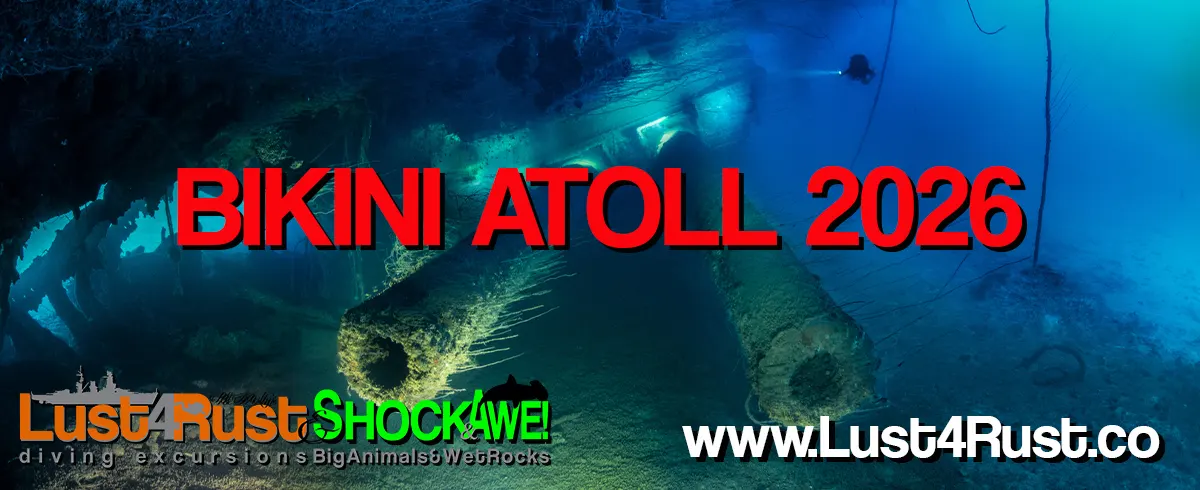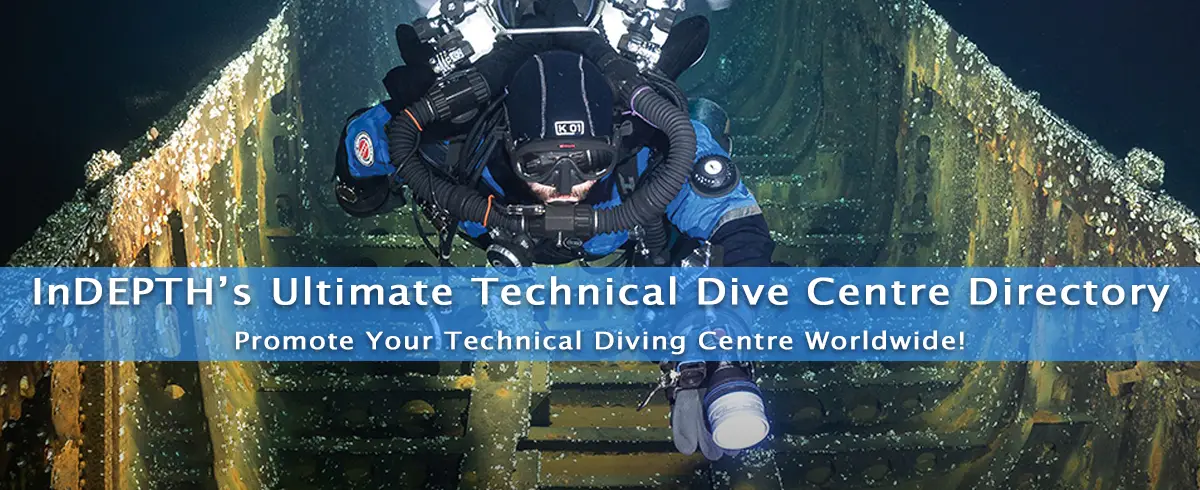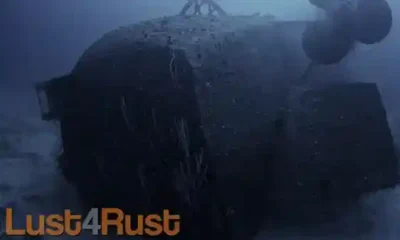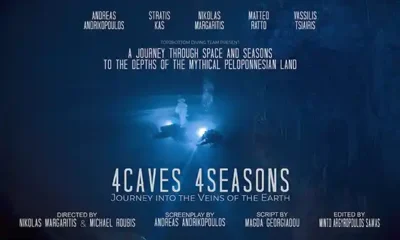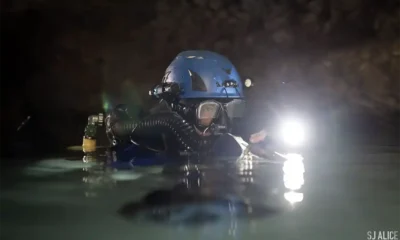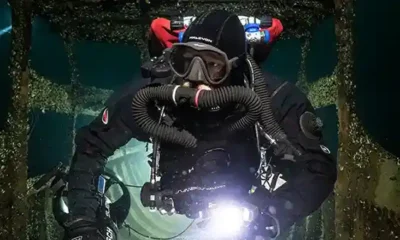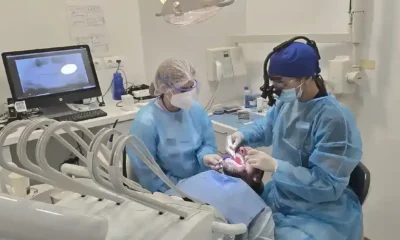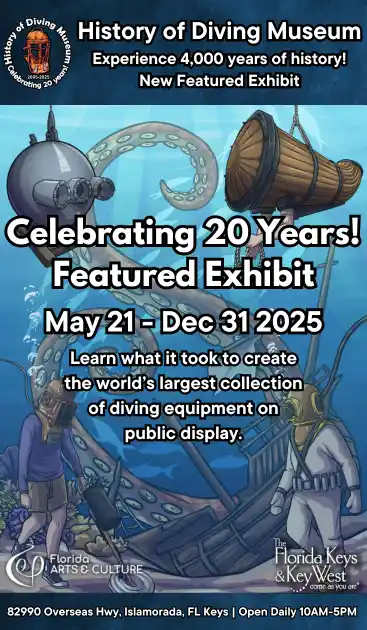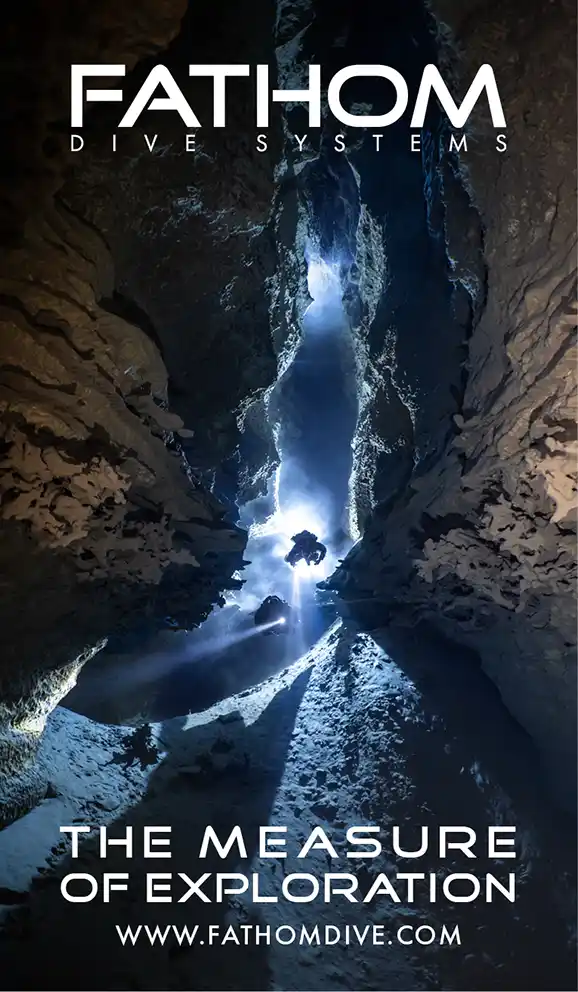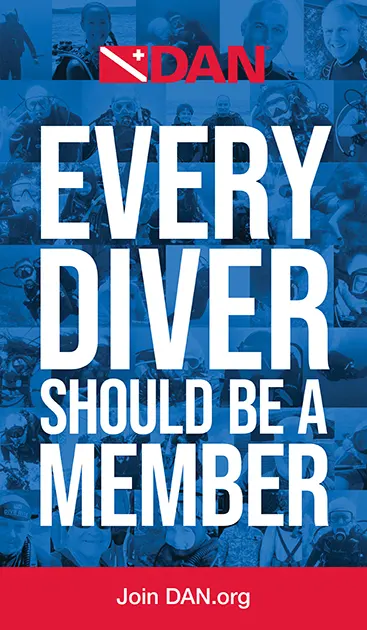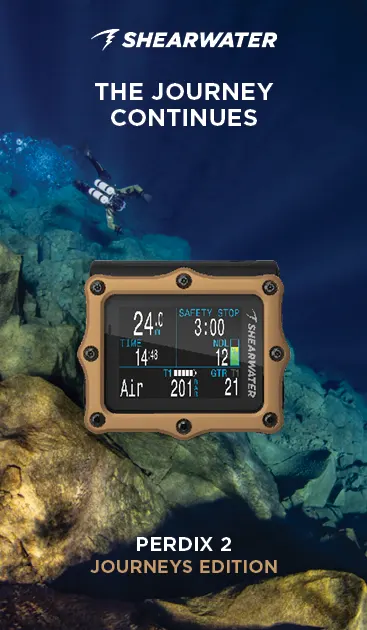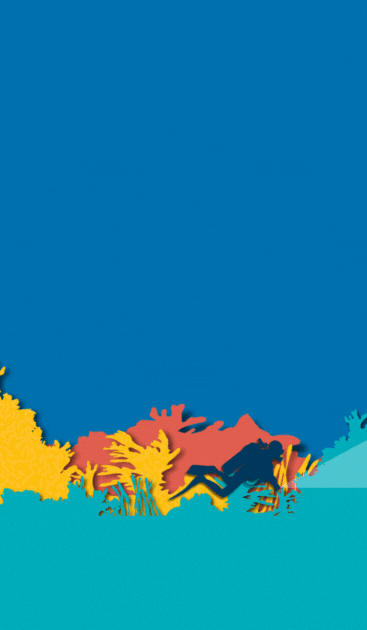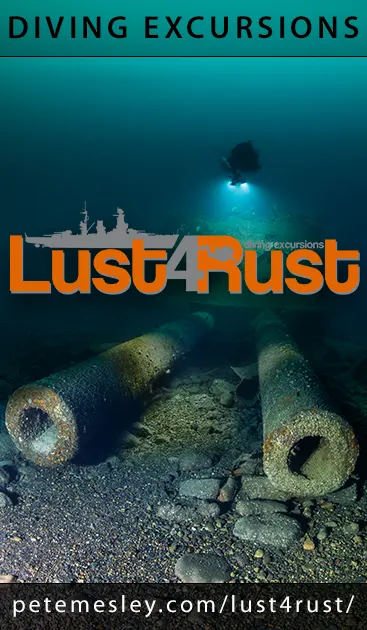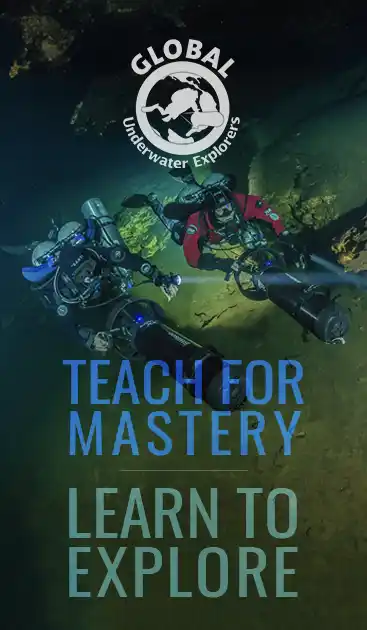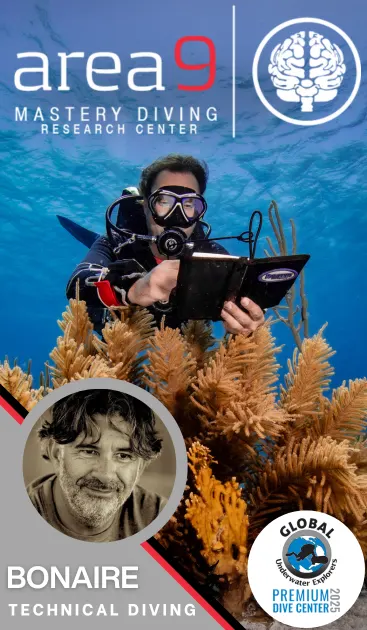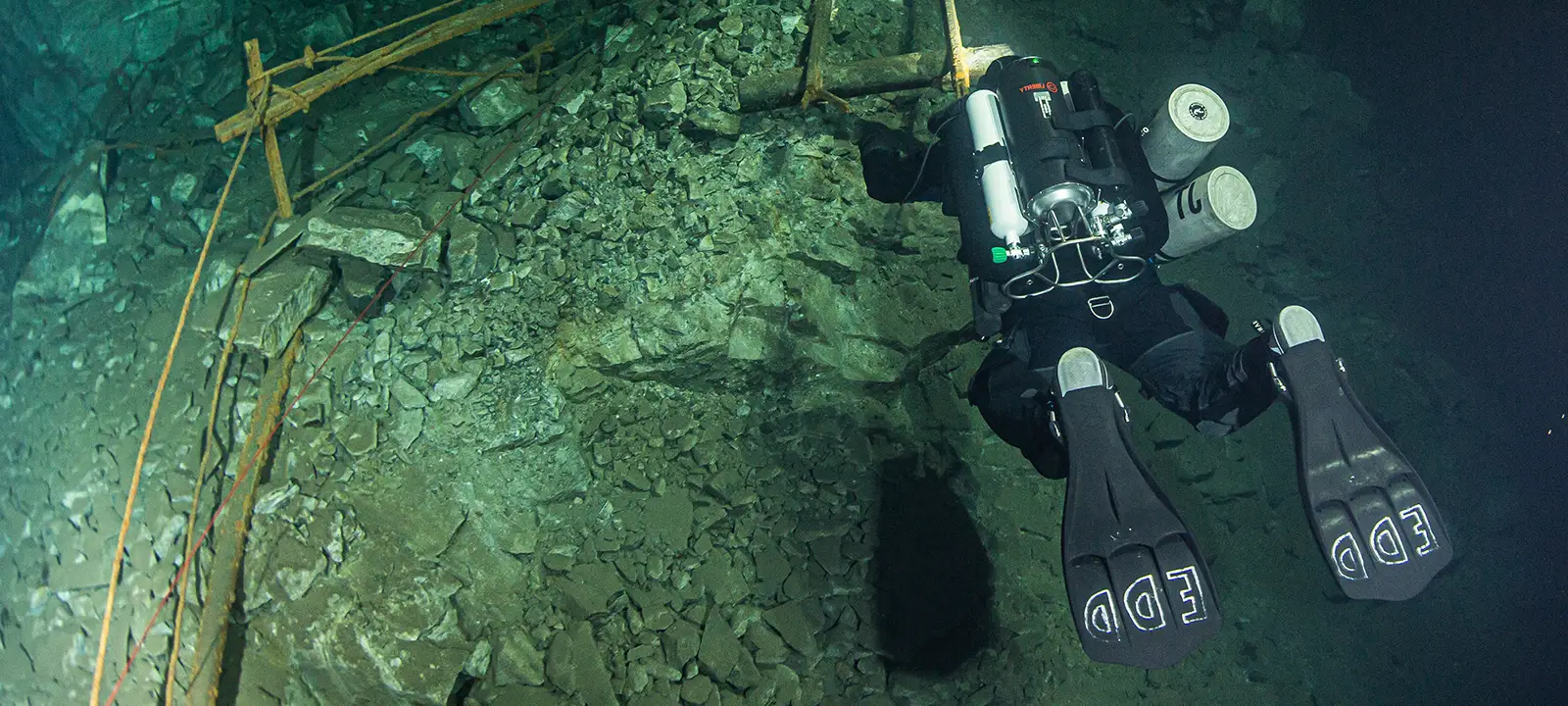

Community
THE TALKS: Diving Deep into Science
Welcome to THE TALKS—an immersive journey into the heart of tech diving that brings inspiring figures in the community together to share their insights, engage in spirited debates, and challenge conventional wisdom. In this episode, our illustrious impresario Stratis Kas explores the synergy between technical and scientific diving with Edd Stockdale, Dr. Sonia J. Rowley, and Phil Short.
A Round Table Rhetoric with Stratis Kas. Lead image: Edd Surveying flooded mine systems in the Nordic region Photo: Petri ‘Rekkis’ Laaksonen
? Predive clicklist: Thomas Dolby – She Blinded Me With Science (Official Video – HD Remaster) ???
This series is designed to explore deep into the heart of tech diving, bringing together inspiring figures in the community to share their insights, engage in spirited debates, and challenge conventional wisdom. So, join us as we embark on a journey of discovery, courage, and camaraderie. Welcome to The Talks. In this episode,we explore the synergy between technical diving and science with:
- Edd Stockdale, Finnish Scientific Diving Academy, University of Helsinki
- Dr. Sonia J. Rowley, Assistant Researcher, Dept. Earth Sciences, SOEST, University of Hawai’i
- Phil Short, DEEP Underwater Research and Training Lead, FRGS



As a child, science fascinated me, but the allure of the arts took hold. Still, becoming a scientist remained a secret dream of mine, making the chance to converse with scientists and technicians who promote and support research a special moment for me. Today is no exception. In fact, it’s even more special as I deeply admire my three guests.
Dr. Sonia J. Rowley is a research scientist specialising in gorgonian (sea fan) corals, particularly at mesophotic (over 50 m/164 ft) and deeper depths in the Indo-Pacific. Phil Short has been a monumental figure in technical diving for me, especially following his work during the Antikythera project in Greece. Finally, Edd Stockdale, whom I first met in 2018 while presenting at Eurotek in Birmingham, has done fascinating work in the harshest conditions in Finland.
Today they will elaborate on their work, sharing both the known and hidden aspects of conducting and supporting scientific diving. I hope this discussion inspires the next generation of scientists to consider integrating diving into their work and that it motivates divers to integrate science into their diving. Often, the needs of our submerged world go unnoticed, which is a core problem. Our future depends heavily on this kind of work—Stratis Kas

Stratis Kas: How does integrating science into technical diving enhance our understanding of underwater ecosystems and environments? Are there any drawbacks or limitations to relying heavily on tech diving for scientific research?
Sonia Rowley: Integrating science into technical diving greatly enhances our understanding of underwater ecosystems. The mesophotic zone, depths beyond 30 m/100 ft, has been largely unexplored until the advent of rebreathers. These allow us to observe, characterise, and document these ecosystems both qualitatively and quantitatively. We’re discovering new species adapted to these depths on nearly every dive which highlights the biodiversity we still don’t know about nor fully understand. Additionally, human impacts reach these depths and have significant effects.
I enjoy using rebreather technology to design experiments at various depths. While some might see this as a limitation, it actually allows for safe and effective scientific exploration. I teach this balance of safety and functionality in my courses. However, there are drawbacks. The time constraints and administrative paperwork in institutional diving can inhibit comprehensive research. I’ve faced challenges in securing funding and safe diving partners, which is why I often dive independently—to get the job done properly and safely. Technical diving also bridges science and policy, promoting conservation. By sharing discoveries from these depths, we can encourage serious consideration and protection of these underwater environments, which is vital as they are rapidly disappearing.

Phil Short: Thanks, Sonia. Building on that, I’ve never been a fan of the term technical diving. I prefer simply being called a diver. Throughout my career as a dive safety officer, dive operations manager, and trainer, I’ve always advocated for using the right tool for the job. While I’m not a scientist myself, I’ve worked closely with scientists to ensure safety and efficiency on their projects and my own projects and expeditions. My role has been to facilitate scientific endeavours whilst prioritising safety. This has involved tailoring training programs and selecting equipment based on the specific needs of each project. Over the years, this approach has led me from open circuit to rebreather diving, and now, integrating commercial diving techniques with rebreather technology.
I believe the focus should be on problem-solving rather than labelling activities as “technical diving.” Depending on the task at hand, solutions may involve AUVs, ROVs, or submersibles, albeit with the acknowledgment of budgetary constraints.

Edd Stockdale: My experience managing a national training facility for scientific dive techniques has shed light on the varied perspectives within the European scientific diving community. Balancing the research question with safety management and risk mitigation is crucial. Institutions often impose depth restrictions without fully considering the potential of modern diving technologies.
Scientific diving extends beyond biology. Disciplines like archaeology and biogeochemistry benefit from diving exploration. For instance, in the Baltic Sea, where biological diversity diminishes at lower depths, diving enables research into maritime heritage dating back centuries.
Unlike robotics, divers can navigate complex environments such as sea caves for sampling and observation. While robotics have their strengths, they may not always be suited to address certain research questions. In essence, the integration of diving techniques and technologies should be driven by the specific needs of scientific inquiry.

Could you provide examples of significant scientific discoveries made possible through collaboration between scientists and divers, as you mentioned earlier? Conversely, are there any situations where such collaborations might hinder scientific progress?
Phil: Yes, examples. My field of being DSO for scientific diving projects has been specifically maritime archaeology, working with Woods Hole Oceanographic Institute, Lund University, and the US National Park Service among others. People that specialise in maritime archaeology and rebreathers have made that work possible, where it would have been impossible with traditional scientific diving techniques.
For example, integration of rebreather and commercial diving techniques for the Second World War aircraft recovery projects that we’ve done for the DPAA (Defense POW/MIA Accounting Agency). WWII aircrew veterans remain on board, and we attempt to respectfully excavate the site to find potential osseous [Ed., skeletal] remains and return the fallen back to their families, back to their country. And one example is the very, very famous, and overly photographed B-17 wreck in Croatia off the island of Viz. It’s a beautiful wreck. It sits in 70 m/230 ft of water. It’s quite possibly one of the most intact aircraft wrecks that you’ll ever see. It looks like it just landed on the seabed after they drained the ocean and then the water was flooded back in. All four engines, all four propellers—everything is quite an amazing thing to see. But that makes it complicated.
In some areas, what the US does to recover their crew—and because they don’t prioritise care about the aircraft and its cultural heritage—they’ll send in a Navy SAT team and just literally take the aircraft apart to find the crew. In areas such as Croatia and also very much so in Malta, the cultural heritage of the item, the wreck, is vitally important so you basically can’t damage it. So, if you go down with a full set of commercial diving equipment, umbilical, those sort of depths, heliox, reclaim, a SAT system on the surface, you are restricting sites that can be excavated by various factors, one being cost. But if we ignore the cost, the other is to get inside an aircraft like that, and the confined space inside of an aircraft is very, very small.
It just couldn’t be done without damaging the aircraft. You’d have to open it up. And with a rebreather and with specific training techniques, we were able to put a team together and train the teams specifically for that kind of work. One of the requirements was that the scientist had to be on the seabed watching the operation.
The scientist guides it, and there’s a site recording expert (SRE) appointed by the DPAA. So, we were able to get the scientists trained to be competent beyond that depth, to be competent for all elements of that dive, and then use the professional divers to penetrate and attempt the recovery. I don’t see a way we could have done that without employing—and I will use the word from your first question—what is called “technical diving,” and specifically rebreather diving.

But equally, part of that is recovery—and to guarantee that nothing is missed when you use the hydraulic dredge to suck away the sediment inside the aircraft and around it, you have to bring that sediment to surface, and you have to then sieve through that sediment to ensure nothing’s been missed. This can mean up to a thousand kilos of sediment to be lifted. So, when we’re rigging that to bring it across to a lift point, we go off rebreather, do a separate dive back to open circuit because of the work rate required to get that all hooked up. We’re swapping equipment to suit the task.
I’ve been involved in three of those projects: one was a survey only, two others were instances when we successfully sent the lost crew members back home to their families for burial. And I don’t think that would have been possible without using what we all do here, which is modern technical diving techniques and modern technical diving equipment adapted in process.
A second example I’ll give is in Edd’s type of waters in the Baltic, just 12 m/40 ft deep. Your first question might be, well, why would you go through the complexity and the added potential risk of using a rebreather for a 12 m dive? The difference is that, with that 12 m dive, you’re now able to put the scientist on bottom for three hours because of suit heating, because of dry gloves, because of the rebreather. A short bounce on open circuit five times a day is nowhere near as productive as one long, three-hour dive. So, by utilising technical diving for a 12 m dive off of Sweden, we were able to effectively lift the seabed, expose the fully buried 1495 Gribshunden wreck, work on it, study it, model it with photogrammetry, and, at the end of the project, bury it again to protect it until such time as it’s decided that it’s possible to raise elements, preserve them, and display them.
Edd: In exactly the same way, I was involved in a project in 2015. It was one of the first deep mesophotic-based diving projects with the UK University, with Oxford, and we went to Honduras to do ecological studies all the way down to 100 m/330 ft off the island of Utila. And we actually published a paper in 2016 on the use of rebreathers for the shallow site because we managed to do, in one dive, the equivalent work that open circuit divers—because it was in the open circuit range on single tanks—would have taken seven days of work to do.
We did it in one dive because you just could just start at 30, 40 m, do multiple replicates of transects, and then move up to 25, then move up to 20, then move up to 15, and move up to 5. And you were decompressing in the shallower ones because you were on a rebreather while actually still doing work. So, in a three-hour dive, you could basically do the entire site—survey the entire site in one go, which is also more scientifically valid because you hadn’t gotten variations (like temporal variations from weather or over the multiple days). Also the gas filling, and the cost, and everything else.

The privately funded research institutes and organisations that are out there now are doing ocean research that is beyond the scope of what your classical institutions can do because they’re outside that very strict workplace safety limitation.
I’m involved with a few of these with the Ocean Census 10-year project for defining new species. You’ve got an organisation called Inkfish that’s doing some interesting stuff around the world—all the new developments that are happening in Phil’s part of the world—and then the Schmidt Foundation. These are the sort of major ones. And all of these are using advanced diving: modern techniques to actually increase our knowledge and increase the range.
There were about three or four groups in the world that were doing deep range biological work: particularly, some from Hawai’i, some from California Academy of Science, and a couple of European teams that had big names. It is, as Sonia said, vital to our understanding of deeper systems because without it, you can’t do it.
It’s easier to teach a scientist to dive than it is to teach a diver to do science. But as soon as you start getting into the technical diving realm, the number of scientists who have the time and the ability to actually get that training and experience shrinks massively.
Then you’ve got to start looking for specialist teams. But unfortunately, they also have to be funded. Just getting the equipment there, finding gases, being able to boost, getting sorbed, et cetera, are huge challenges. That sort of causes a lot of groups that wouldn’t really benefit from having access to these zones just going, “Well, it’s too expensive, let’s get an ROV.” The collaboration is important between dedicated, trained teams, and it is an advantage for science to supplement those very, very few scientists who are actually qualified and experienced working those ranges.
Sonia: I’ve been reflecting on my experiences, particularly regarding scientists participating in diving. It might sound unconventional, but I often felt safer diving alone, although I knew it wasn’t the wisest choice. To address this, I developed three courses aimed at training proficient technical divers from outside the scientific community to assist with my research. Collaborating with non-scientist technical divers has taken our scientific pursuits to new heights.
However, selecting the right individuals and securing funding remain significant obstacles. I’ve introduced a primer course to assess participants’ suitability for research expeditions, ensuring they possess the necessary experience and skills. Overestimating one’s abilities can impede scientific progress, particularly in remote and challenging environments. It’s a tough decision to restrict individuals’ diving depth, but safety must always come first. One of my most rewarding collaborations was with Sam Mason, whose involvement significantly boosted our productivity.

That’s incredibly insightful, thank you. It resonates with my experiences as well. While I’m not a scientist, similar challenges arise in my line of work, particularly during filming expeditions. Whether it’s for scientific research or filming purposes, assessing individuals’ capabilities is paramount. In what ways do your respective backgrounds in science inform your approach to exploration and data collection underwater? Do you believe that a strong scientific background is essential for all divers involved in research, or can diving expertise suffice? Sonia touched on this earlier, but could you delve a bit deeper?
Edd: There’s a point where diving expertise becomes more crucial than scientific background. This resonates with me personally because my primary role involves training occupational scientific divers. Initially, we developed a standard professional diploma in occupational scientific diving to equip marine scientists and students with the skills needed for professional scientific diving, typically using classical scuba down to 30 m. However, my interaction with advanced techniques like rebreathers, technical, and overhead diving alongside scientific diving revealed a gap. Individuals with basic occupational training were acquiring recreational rebreather qualifications and applying them without understanding the management nuances between different techniques. To bridge this, we created a European scientific diver rebreather program, akin to Sonia’s mesophotic primer, to provide comprehensive training for both scientists and divers interested in science.
Our program achieved a balanced mix, with half the participants being scientists seeking to enhance their rebreather skills and the other half being volunteers or employees involved in scientific work. My experience suggests that below a certain depth, around 60-70 m, divers’ expertise becomes pivotal. My deep-range team comprises individuals with hypoxic range rebreather diving experience and diverse environmental exposure. Their ability to manage heavy task loads and adapt to changing conditions contributes significantly to our projects’ success. Moreover, integrating techniques from advanced diving enhances efficiency and safety in scientific endeavours.

Sonia: As a scientist, I enjoy diving with instructors and divers. It helps me stay current with technical diving and the diving community as a whole. It’s easy to become so immersed in science that you lose track of developments in diving practices. Personally, I’m grateful for my prior experience as a diver and commercial diver before transitioning to science at the age of 30. Working with others, I’ve found that beyond a certain depth range, both the ecosystem and divers’ capabilities change. Interestingly, individuals with a higher education can sometimes be challenging to teach because they may have preconceived notions. Conversely, those without a strong scientific background can excel underwater, demonstrating intelligence and skill. The key difference often lies in their motives. During research expeditions, whether someone is a scientist, or not, significantly impacts their performance underwater.

Phil: Yeah, I completely agree. Take the Mary Rose project, probably one of the most iconic and successful maritime archaeology endeavours of all time. They managed to lift the remains of the wreck, which are now beautifully displayed in one of the world’s best interactive museums on the theme. This was accomplished entirely by amateur sport divers under the guidance of Margaret Rule and Alex Hildred, the principal maritime archaeologists. It worked. I wholeheartedly agree with Sonia that if someone is overly intelligent, especially if they’re of a scientific mindset but in a different field, it can be difficult to instruct them.
On the other hand, if you have someone with a high level of enthusiasm, a willingness to learn, and underwater capability, you can effectively utilise them. One such project that comes to mind is my work over seven separate seasons on the Antikythera mechanism shipwreck in Greece. The site was too deep for the scientists we had at hand, who were classic old-school scientific divers using single tank, single regulator setups, going deeper than they should with no communication equipment. Eventually, the lead archaeologist Dr. Brennan Foley decided to train the divers who could reach the depth to carry out the tasks, film them, debrief with them in the evenings, and plan the next steps accordingly.

I am not a scientist, and I don’t hold a degree, but I consider myself intelligent enough to follow instructions. It’s a matter of being told what needs to be done and carrying it out. The scientists can oversee and monitor the work from the surface. An example from a different context, but relevant to our discussion, is British Cave Rescue. About fifteen years ago, they realised it was impractical to train paramedics to become British cave divers due to the challenging nature of British cave diving. Instead, they took a group of experienced British cave divers and sent them on an Advanced Cave Rescue first aid course. Equipped with a through rock communication system, these divers can act like combat medics, assisting with casualties beyond the flooded sections of caves and following the doctor’s directions.
Yes, absolutely. I followed the Antikythera project closely, especially as an active IANTD diver in Greece at the time. The story is well-known and highlights the need for innovation to achieve safety and preservation goals. Embracing new approaches, even on the fly, can yield impressive results, as demonstrated by this project.
My next question is for Sonia. Do you think technological advancements are sufficiently addressing historical limitations in underwater research, or are there still significant gaps? For example, improvements in battery and data storage technology have dramatically impacted cave diving lights and filmmaking equipment, making professional-level productions lighter and more affordable. For us in filmmaking, the sudden doubling of battery duration was a breakthrough, significantly enhancing our work. How about in your field?
Sonia: Okay, Stratis, expanding on the topic of cameras and lighting. I’ll be honest; I push them beyond their depth limits and have found ways to make them work. Simple adjustments, like ensuring my Sola lights are activated by 40 m, are crucial for their operation thereafter. Once activated, they perform admirably. The reason I prefer these lights is that they bring out the natural colours of the animals I study, providing a realistic view of my research subjects and their environments. Lighting is essential for accurate documentation. It would be ideal if I could adjust them at depth, but unfortunately, that’s not feasible. I encounter issues because I’m pushing them beyond their intended capabilities. It would be a game-changer if adjustments were possible underwater at depth.

Similarly, with camera equipment, I use the compact Sony RX100 series, which I find excellent. However, beyond 140 m/460 ft, they sometimes act on their own due to the pressure. Whilst I know the technology exists to address this, it’s a matter of funding. To mitigate issues, I ensure everything is generously lubricated with silicone grease, despite the counterintuitive nature of the solution. While my camera housings are rated for 100 m, I’ve managed to conduct my scientific work effectively. I deploy multiple cameras at a site, allowing me to transition seamlessly between depths and maintain productivity throughout the dive day. In terms of instrumentation, I’ve adapted deep-sea technology for mesophotic research over the years. However, advancements in technology tailored for mesophotic environments are promising. It’s an ongoing evolution, much like the animals I study.
Staging cameras. That’s a new concept for me, I’m intrigued. I’ll definitely consider implementing it. Of course, it might mean requesting a larger budget, but it’s worth exploring. Phil, what are your thoughts?
Phil: Our diving world, whether for science, exploration, or leisure, is long overdue for a technological injection. The technology that’s revolutionised military hardware and aerospace is finally making its way to us. The main need from our conversation’s standpoint is maximising functional bottom time. All the decompression, ascent, and preparation are necessary but non-productive extras. My current focus at DEEP as Underwater Research Lead is achieving exactly that—enabling scientists to work efficiently and effectively for long, uninterrupted missions.
Imagine scientists being able to work without the time-consuming inconveniences. The technology exists, the science is there, and it’s all within reach. As for budgets, private companies and institutions are emerging, similar to what’s happening in space exploration. This shift is already underway in ocean exploration. So, while technology may have held us back, change is inevitable and long overdue.

Edd: Well, humorously, at first glance, I thought, “I hope we’ve still got significant gaps, otherwise Phil’s out of a job!” But seriously, there’s much to be addressed technologically. Our understanding of mesophotic work in the past few decades alone shows that. We need advancements in technology, but also in our understanding of physiology and decompression theory. The integration of techniques is crucial too. Segmentation limits us. ROV teams stick to ROVs, divers stick to diving, and so on. But integrating these techniques can deepen our understanding. Of course, funding is a perpetual challenge. As for techniques, Phil and I are moving to dual rebreathers due to increased bailout needs. Looking ahead, I believe solid-state gas storage for rebreathers could be a game-changer, although it’s likely decades away.
Solid-state gas? Perhaps we’ll need a better look into that topic. Phil, could you share how you emphasise the significance of your work in connecting scientific inquiry with public awareness? And do you think there’s a danger of prioritising diving adventures over scientific rigour in public outreach?
Phil: I recall a time when the focus was more on the adventure, particularly in diving. However, nowadays, there’s a noticeable shift towards a stronger emphasis on science, especially among young people. The method of data collection, whether through wildlife photography or research, is now seen as a means to an end rather than the primary focus. Kids today are genuinely interested in the science itself. Engaging with schools and conducting outreach programs is crucial in conveying the essence of our research endeavours—be it Sonia’s or Edd’s work—to the younger generation.
It’s basically the youngsters that are going to be using it, improving it, working with it, finding new things. And, you know, if you remember when every little boy and every little girl wanted to sit on a Saturday morning with their mum or dad and watch Cousteau’s latest weekly episode, they go, “I want to do that.” It’s harder these days to get people to be sort of driven to do that. And that’s the direction I think we need to go in. Outreach and advocacy, aimed at the young, getting everyone interested in the science and what it’s achieving as a starting point.

Edd: I fully agree with Phil. We need to basically bridge the gap between the scientific investigations that are going on and the general public. There is an interest there because, otherwise, we wouldn’t have all these conservation projects—these citizen science projects. I mean, the three of us combined, or even the four of us, have published extensively in the general media as well as in the scientific publication field on what we’re doing because there is a huge interest.
I mean, these days universities are employing science communicators. I have one next door; her entire job is to communicate what is going on in terms of research so that the general public can have more understanding, which then also generates more interest and pressure on funding bodies to put money across. One of the things that we actually do on our scientific dive occupational program is we train media management as part of it. It is really important to have excellent public scientific communication and outreach for all projects. Without it, funding for science will fizzle out, and interest in the diving aspect will also fade, causing both sides to lose.
Sonia: I have found that at least 90% of the graduate students I talk with are disenchanted by the system. They can’t earn an honest living, and that’s discouraging. I don’t have dependents, and I come from a different background, so I just keep pushing forward. Many of those who stay in the field become science communicators, which is great, but we’re losing good scientific brains who could do valuable work. I’ve resorted to social media. I used to want to stay under the radar, just get my science done without drawing attention. But I’ve realised I need to put myself out there to fund the research and passion for science.

Social media has been surprisingly valuable. The feedback is incredible, more than I ever imagined. I’ve even started selling my images, though I’m not a photographer, just to bring in funding. A lot of funding goes into admin, which is frustrating. We have all these skills and abilities, but can’t use them effectively. Biodiversity and our natural world are often valued only for their monetary worth, which is distasteful. Gorgonians, for example, are more than just secondary spaces for nursery food fishes. Changing how people see the natural environment, research, and science is crucial, and social media can help.
Passion is often seen as reserved for artists, but it’s a human characteristic that’s just as important in science. Closing statements?
Phil: We have to engage the wider public to understand and protect. If talks like this can help, then that’s exactly what we need. I’ve known Edd forever, and although I’ve only just met Sonia, we all share this passion for sharing our knowledge.
Edd: Advanced diving has a very important role in science to increase our understanding of the oceans. Without understanding, we can’t run any conservation or form policy. There is an entire world of trained and experienced people who can contribute to this. It’s about showing them they can get involved and showing scientists that there’s an opportunity to expand their research by accessing this field. Thanks, Stratis, for inviting me.
My pleasure. Sonia?
Sonia: Yeah, I completely agree with Edd and Phil. It’s been a delight to meet you all. Ed and I met in Wakatobi many moons ago during my PhD. Phil, I don’t believe we’ve met before. There’s a phrase that comes to mind: “Only you alone can do it, but you cannot do it alone.” That applies to all our objectives. I’ve needed to be like an octopus to get my research done, but without sharing, we can’t solve these problems as effectively. Sharing our knowledge and technology is crucial so people can contribute their skills. It’s a win-win.
I’ll close with my own statement, inspired by what you said. It used to be the slogan in our filming expedition group: “Exploration is not complete unless it’s shared.” This applies to science, research, and everything. Your presence here is part of the sharing. Without you, I couldn’t share anything. So, thank you very, very much.
DIVE DEEPER
InDEPTH: THE TALKS #1: Cave Diving Nomads
InDEPTH: The TALKS #2: Leaders of the Pod
InDEPTH: From Diver to Filmmaker: Carolin Negrin’s Underwonder Odyssey by Stratis Kas

Edd Stockdale
For over a decade, Edd Stockdale has worked in dive safety and logistics management for remote research expeditions and specialised in advanced diving operations, especially in deeper projects using rebreathers. In recent years, this expertise has seen him running global scale projects (such as Ocean Census), collaborating with research institutions in applying these techniques, and developing training programs in scientific diving fields in his role as coordinator of the Finnish Scientific Diving Academy at the University of Helsinki. As an avid underwater explorer, Edd has contributed to a large number of articles, books, and presentations on science and exploration into the underwater world. He is a team member of the Finnish wreck exploration team Badewanne, Fellow of The Explorers Club, a member of Team Reel Diving, and Ambassador for Divesoft and DAN Europe.
Links
www.helsinki.fi/en/finnish-scientific-diving-academy

Phillip Short, FRGS
Phil is a dive industry consultant, and he has been diving professionally for 34 years within the recreational, technical, cave, scientific, media, and commercial communities. With over half of his 7,500+ dive hours on CCR, rebreather use for exploration and project diving is his specialty. Phil has acted as Diving Safety Officer and Diving Operations Manager for scientific projects for Woods Hole Oceanographic Institute, Lund University, the US National Parks Service Submerged Cultural Resources Unit, and the DPAA, among others. Phil is a Fellow of both the Royal Geographical Society and the Explorers Club and member of the British Cave Diving Group.
Links
Facebook: Phil Short Technical
LinkedIn: Phil Short
Instagram: phil_short-explorer

Dr. Sonia J. Rowley
Dr. Sonia J. Rowley is a research scientist working on gorgonian (sea fan) corals, particularly at the mesophotic (over 50 m/164 ft) and deeper depths of the Indo-Pacific. Originally raised on dive boats since childhood in the UK, she now applies these skills to her research. With over 40 years of diving experience, Dr. Rowley uses technical rebreather diving and freediving to conduct experimental field research, leading expeditions to extreme depths at remote locations. She has been awarded the Sir David Attenborough Award for her fieldwork at mesophotic depths and has designed the Methods in Mesophotic field course series to help support her research and share her knowledge and skills with others. Dr. Rowley is an Elected Fellow of the Explorers Club, Linnean Society of London, Royal Society of Biology, a Scientific Associate at the Natural History Museum, London, Research Associate at the Smithsonian Institute, and Research Assistant at the University of Hawai’i, USA. She has been the principal investigator or participated in over 50 research expeditions throughout the world. However, she believes that the most powerful tool for change is to share the knowledge and experience gained from her research. Therefore, she continuously pursues outreach initiatives: over 50 invited seminars and public presentations in more than 30 countries, active academic mentoring, and maintaining social media platforms of communication.
Links
IG: @soniaevolution
Twitter: @SoniaJRowley
Facebook: Sonia Rowley
Patreon: soniajrowley
FAA/Pixels: https://fineartamerica.com/profiles/sonia-rowley

Stratis Kas, a Greek-Italian professional diving instructor, photographer, film director, and author, has spent over a decade as an esteemed Advanced Cave instructor, leading expeditions to extreme locations worldwide. His impressive diving achievements have solidified his expertise in the field. In 2020, Kas published the influential book Close Calls, followed by his highly acclaimed second book, CAVE DIVING: Everything You Always Wanted to Know, released in 2023. Accessible on stratiskas.com, this comprehensive guide has become a go-to resource for cave diving enthusiasts. Kas’s directorial ventures include the documentary “Amphitrite” (2017), shortlisted for the Short to the Point Film Festival, and “Infinite Liquid” (2019), which explores Greece’s uncharted cave diving destinations and was selected for presentation at Tekdive USA. Kas’s expertise has led to invitations as a speaker at prestigious conferences including Eurotek UK, Tekdive Europe and USA, Tec Expo, and Euditek. For more information about his work and publications, visit stratiskas.com.

